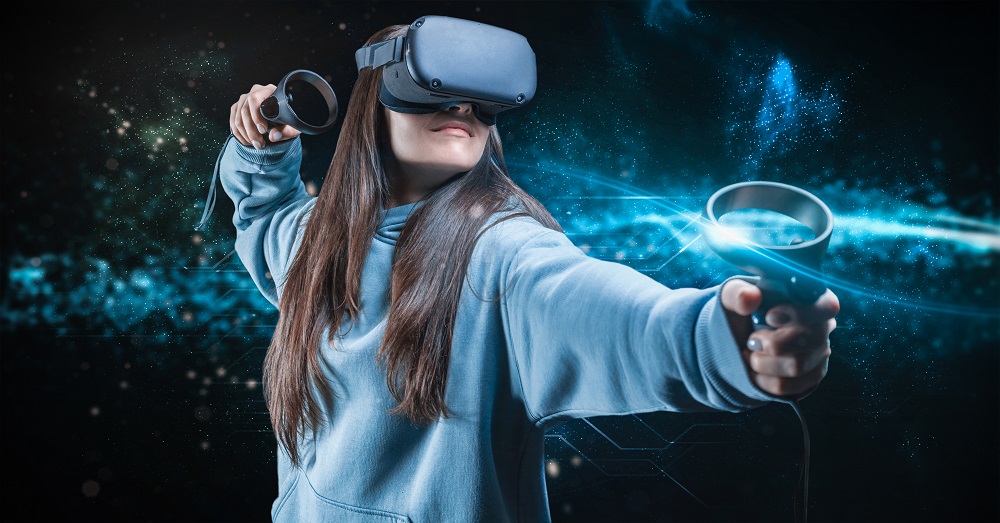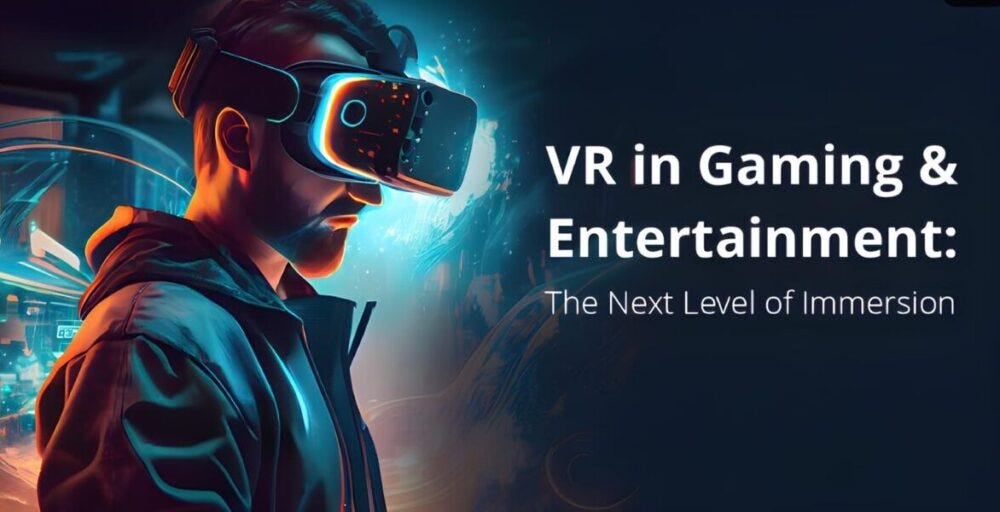Virtual Reality Gaming: Immersive Experiences and Future Trends
Virtual Reality gaming has revolutionized the way we experience entertainment. With its ability to transport users to virtual worlds, it offers a level of immersion and engagement that traditional gaming cannot match. Imagine stepping into a game and physically interacting with the environment, wielding a controller as a sword or exploring vast landscapes from the comfort of your home. Virtual Reality gaming has opened up a new realm of possibilities, allowing players to truly become a part of the game.
In recent years, the popularity of Virtual Reality gaming has skyrocketed, and the future looks even more promising. With technological advancements, the quality of VR experiences continues to improve, offering more realistic graphics, enhanced audio, and better motion tracking. According to a report by Statista, the global Virtual Reality gaming market is projected to reach a value of $45.09 billion by 2027. This growth can be attributed to the increasing demand for immersive gaming experiences and the continuous development of VR hardware and software.


Immersive Virtual Reality Gaming: A New Era of Experiences
Virtual reality gaming has revolutionized the way we experience and interact with video games. With the advent of immersive VR technology, players can now step into a virtual world and become fully immersed in the gameplay. This new era of gaming offers unparalleled levels of immersion, interactivity, and realism, creating a truly unforgettable gaming experience.
One of the defining features of virtual reality gaming is the use of a head-mounted display, or HMD, which completely covers the player’s field of view. This allows players to feel as if they are actually inside the game, surrounded by the virtual environment. Coupled with motion-tracking technology, VR gaming enables players to physically move and interact with the virtual world, further enhancing the sense of immersion.
Virtual reality gaming also incorporates other sensory feedback, such as haptic feedback and spatial audio, to further enhance the immersive experience. Haptic feedback provides tactile sensations to the player, allowing them to feel the impact of virtual objects and actions. Spatial audio, on the other hand, creates a three-dimensional soundscape that accurately reflects the player’s position and movements in the virtual world.
Benefits of Virtual Reality Gaming
The immersive nature of virtual reality gaming offers a wide range of benefits for players. Firstly, it allows for a more engaging and realistic gaming experience. Players can fully explore and interact with the virtual environment, making decisions and solving challenges in a way that feels natural and intuitive. This level of interactivity can lead to a deeper sense of presence and emotional connection with the game.
Virtual reality gaming also has the potential to enhance learning and skill development. Many VR games are designed to challenge players’ problem-solving abilities, cognitive skills, and motor coordination. By immersing themselves in these virtual worlds, players can improve their spatial awareness, hand-eye coordination, and strategic thinking. Some studies have even shown that virtual reality can help improve memory and concentration.
An additional benefit of virtual reality gaming is its potential for therapeutic uses. VR has been used in various therapeutic applications, such as pain management, rehabilitation, and exposure therapy for phobias and post-traumatic stress disorder. The immersive nature of VR can create a safe and controlled environment for patients to confront and overcome their fears or engage in physical therapy exercises.
Future Trends in Virtual Reality Gaming
The world of virtual reality gaming is constantly evolving, and there are several exciting trends on the horizon.
1. Enhanced Graphics and Realism
As technology continues to advance, we can expect to see even more realistic and visually stunning virtual reality games. Improved graphics capabilities, higher display resolutions, and better rendering techniques will contribute to a more immersive and lifelike gaming experience. From detailed environments to realistic character animations, the future of VR gaming holds endless possibilities for creating virtual worlds that are indistinguishable from reality.
Advancements in hardware, such as faster processors and more powerful GPUs, will also play a significant role in enhancing the graphical fidelity of VR games. With better processing capabilities, developers will be able to create more complex and detailed virtual environments, further blurring the line between the real and virtual worlds.
Another aspect of enhanced realism in VR gaming is the integration of photorealistic graphics and real-time ray tracing. By simulating the way light interacts with objects in the virtual environment, developers can create stunning visuals that closely resemble the real world. This level of graphical fidelity will greatly contribute to the immersion and realism of virtual reality gaming.
2. Expanded Content and Genres
As virtual reality technology becomes more widely adopted, we can expect to see an expansion in the range of content and genres available in VR gaming. While the current focus is primarily on immersive experiences and simulations, future advancements may open the doors to a wider variety of game styles, including action, adventure, sports, and even multiplayer online games.
Developers are continually pushing the boundaries of what is possible in virtual reality, and the future will likely bring innovative gameplay mechanics and storytelling techniques specifically designed for the VR medium. This will create new opportunities for immersive narrative-driven experiences, interactive puzzles, and engaging multiplayer interactions.
Furthermore, virtual reality gaming is not limited to traditional gaming platforms. With the rise of standalone VR headsets and mobile VR devices, such as the Oculus Quest and Samsung Gear VR, more people have access to VR gaming experiences. This increased accessibility will drive the development of content for casual gamers and provide opportunities for independent developers to create unique and compelling VR experiences.
3. Advancements in Input Devices and Interaction
The way we interact with virtual worlds is constantly evolving, and future advancements in input devices will play a crucial role in enhancing the VR gaming experience. While current VR systems primarily rely on handheld controllers for input, there is a growing interest in gesture recognition, eye tracking, and even full-body tracking.
Gestural input, such as hand-tracking or body movements, can provide a more intuitive and natural way to interact with the virtual environment. This can enhance the sense of presence and immersion, as players can use their own gestures and movements to control the game. Eye-tracking technology, on the other hand, can enable more realistic character interactions and dynamic gameplay elements based on the player’s gaze.
Additionally, advancements in haptic feedback technology will further enhance the sense of touch and tactile feedback in VR gaming. Innovations such as gloves or suits with embedded haptic sensors can provide more realistic sensations, such as the feeling of texture, impact, or even temperature.
4. Social and Multiplayer Experiences
Virtual reality gaming has the potential to transform social experiences and multiplayer interactions. With the ability to connect with friends and players from around the world in virtual environments, VR gaming can offer a new level of social interaction and immersion.
Currently, VR multiplayer experiences are relatively limited, with most games focusing on single-player or local multiplayer modes. However, as the technology matures and user adoption increases, we can expect to see more robust multiplayer features, such as large-scale virtual worlds, social hubs, and cooperative gameplay.
Virtual reality also has the potential to revolutionize live esports and competitive gaming. Immersive VR experiences can create a more intense and engaging atmosphere for both players and spectators, blurring the line between physical and virtual sports. This opens up new possibilities for esports tournaments and online competitions that take place entirely in virtual reality.
5. Integration with Other Technologies
Virtual reality gaming is not limited to the confines of the gaming industry. The technology has the potential to integrate with other emerging technologies to create unique and innovative experiences.
One such integration is the combination of VR and augmented reality (AR). While VR immerses the user in a fully virtual environment, AR overlays virtual elements onto the real world. By blending these two technologies, developers can create mixed reality experiences that combine the best of both worlds, allowing players to interact with virtual objects and characters in their real surroundings.
Another potential integration is with artificial intelligence (AI) and machine learning. AI can be used to enhance the realism and intelligence of non-player characters (NPCs) in VR games, making them more lifelike and responsive to player actions. Machine learning algorithms can also be utilized to adapt and personalize the gaming experience based on the player’s behavior and preferences.
Overall, the future of virtual reality gaming is filled with exciting possibilities. As technology continues to advance and more players embrace the immersive experience of VR gaming, we can expect to see a continued evolution of the medium, pushing the boundaries of what is possible in gaming.
Conclusion
Virtual reality gaming has unlocked a new era of immersive experiences, revolutionizing the way we play and interact with video games. The combination of VR technology, realistic graphics, and interactive gameplay has created a truly unforgettable gaming experience. With future trends like enhanced graphics, expanded content and genres, advancements in input devices, social multiplayer experiences, and integration with other technologies, the future of virtual reality gaming holds endless possibilities. As technology continues to advance, we can expect to see even more breathtaking and lifelike virtual worlds that blur the line between reality and the digital realm. Virtual reality gaming is shaping up to be the next frontier in the gaming industry, offering gamers a whole new level of immersion and excitement.
Key Takeaways: Virtual Reality Gaming: Immersive Experiences and Future Trends
- Virtual reality gaming provides a whole new level of immersive experiences, transporting players to virtual worlds.
- With advancements in technology, virtual reality gaming is becoming more accessible and affordable.
- The future of virtual reality gaming looks promising with the potential for even more realistic graphics and enhanced gameplay.
- Virtual reality gaming can offer unique social experiences, allowing players to interact with others in virtual environments.
- As virtual reality continues to evolve, we can expect to see more innovative and creative game concepts.

Virtual reality gaming offers players incredibly immersive experiences with its realistic graphics and interactive gameplay. It makes you feel like you’re actually inside the game!
Looking to the future, virtual reality gaming is set to become even more exciting and accessible. With advancements in technology, we can expect improved graphics, more comfortable and lightweight headsets, and a wider range of games to choose from. Virtual reality gaming is here to stay, and it’s only going to get better!


